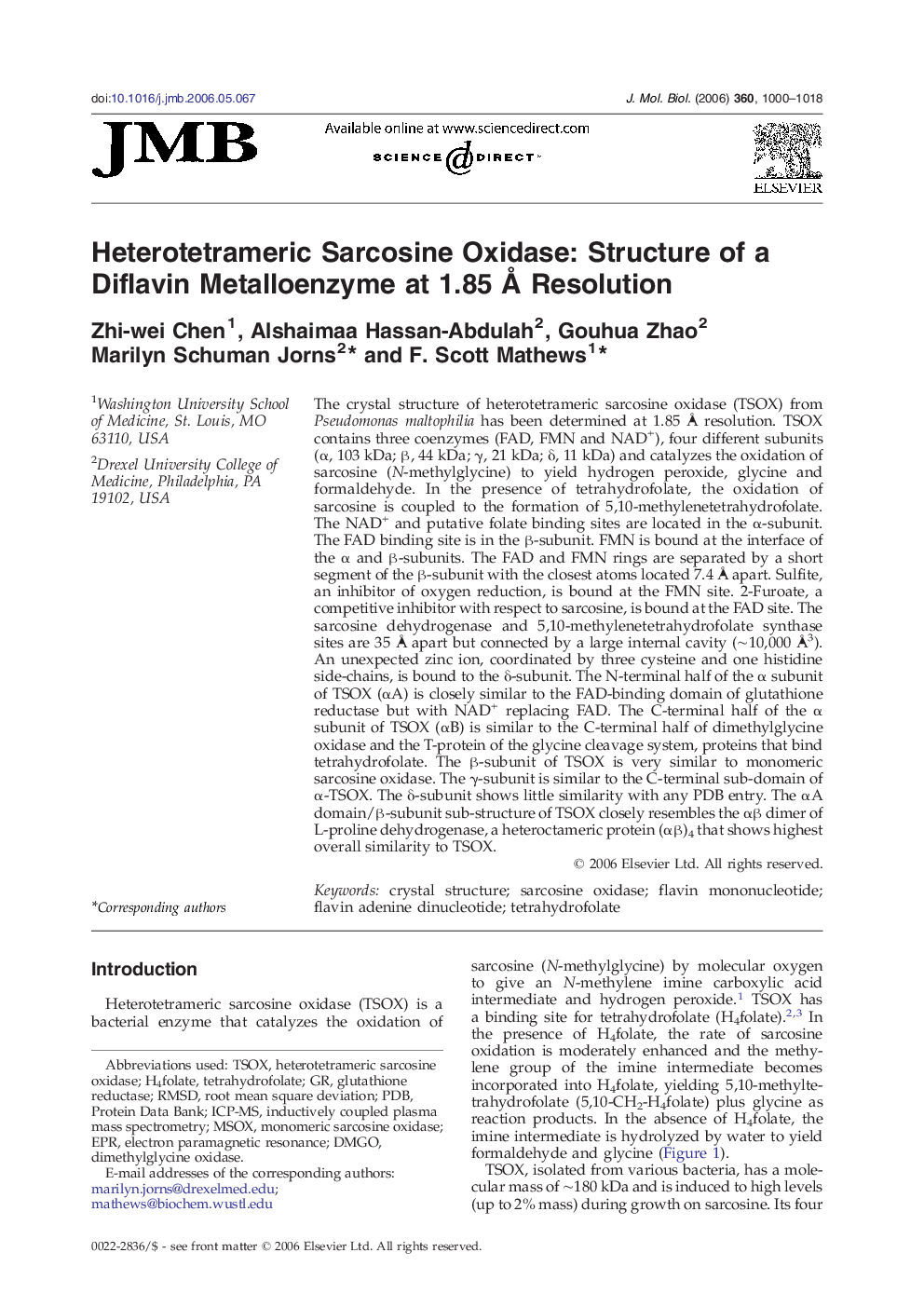| کد مقاله | کد نشریه | سال انتشار | مقاله انگلیسی | نسخه تمام متن |
|---|---|---|---|---|
| 2189282 | 1550373 | 2006 | 19 صفحه PDF | دانلود رایگان |

The crystal structure of heterotetrameric sarcosine oxidase (TSOX) from Pseudomonas maltophilia has been determined at 1.85 Å resolution. TSOX contains three coenzymes (FAD, FMN and NAD+), four different subunits (α, 103 kDa; β, 44 kDa; γ, 21 kDa; δ, 11 kDa) and catalyzes the oxidation of sarcosine (N-methylglycine) to yield hydrogen peroxide, glycine and formaldehyde. In the presence of tetrahydrofolate, the oxidation of sarcosine is coupled to the formation of 5,10-methylenetetrahydrofolate. The NAD+ and putative folate binding sites are located in the α-subunit. The FAD binding site is in the β-subunit. FMN is bound at the interface of the α and β-subunits. The FAD and FMN rings are separated by a short segment of the β-subunit with the closest atoms located 7.4 Å apart. Sulfite, an inhibitor of oxygen reduction, is bound at the FMN site. 2-Furoate, a competitive inhibitor with respect to sarcosine, is bound at the FAD site. The sarcosine dehydrogenase and 5,10-methylenetetrahydrofolate synthase sites are 35 Å apart but connected by a large internal cavity (∼10,000 Å3). An unexpected zinc ion, coordinated by three cysteine and one histidine side-chains, is bound to the δ-subunit. The N-terminal half of the α subunit of TSOX (αA) is closely similar to the FAD-binding domain of glutathione reductase but with NAD+ replacing FAD. The C-terminal half of the α subunit of TSOX (αB) is similar to the C-terminal half of dimethylglycine oxidase and the T-protein of the glycine cleavage system, proteins that bind tetrahydrofolate. The β-subunit of TSOX is very similar to monomeric sarcosine oxidase. The γ-subunit is similar to the C-terminal sub-domain of α-TSOX. The δ-subunit shows little similarity with any PDB entry. The αA domain/β-subunit sub-structure of TSOX closely resembles the αβ dimer of L-proline dehydrogenase, a heteroctameric protein (αβ)4 that shows highest overall similarity to TSOX.
Journal: Journal of Molecular Biology - Volume 360, Issue 5, 28 July 2006, Pages 1000–1018